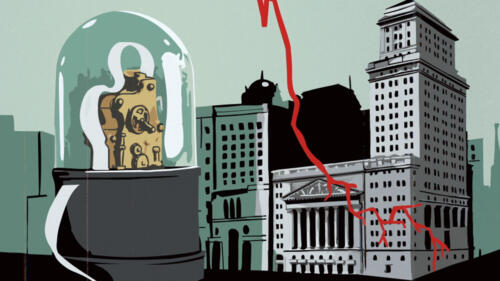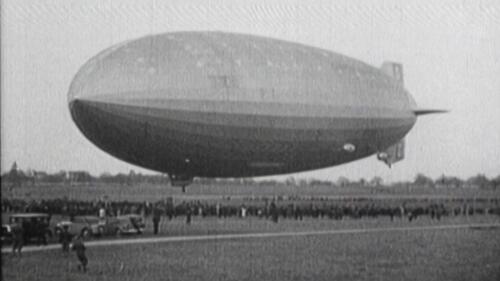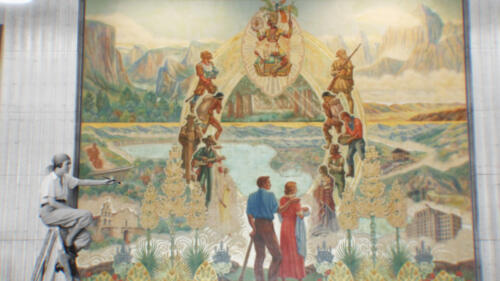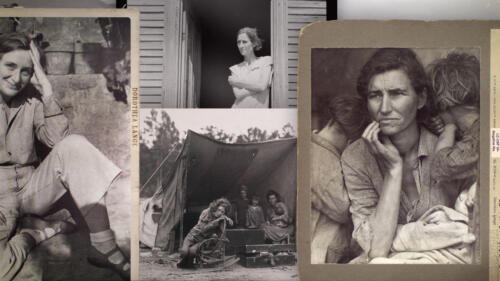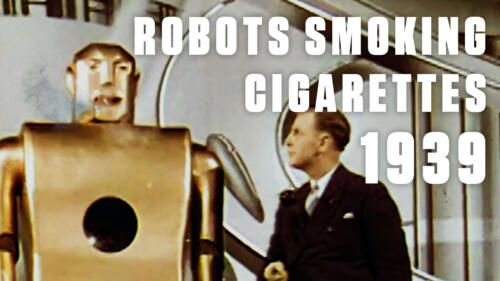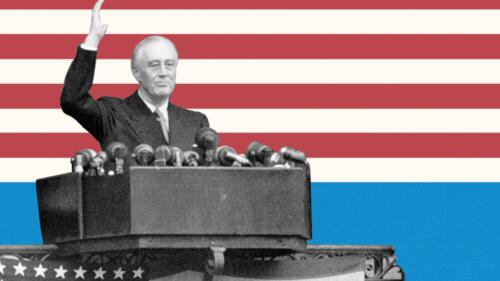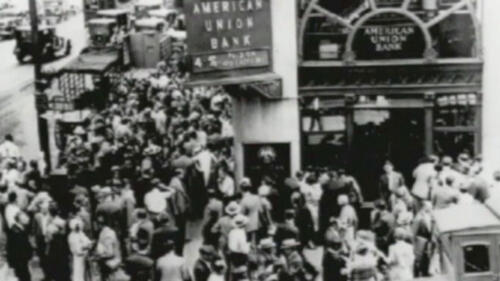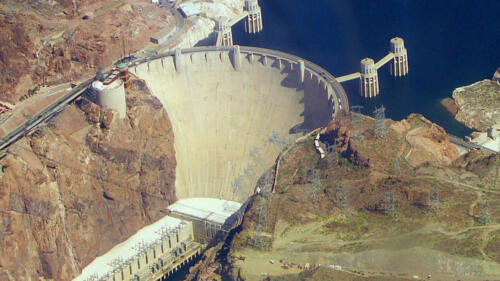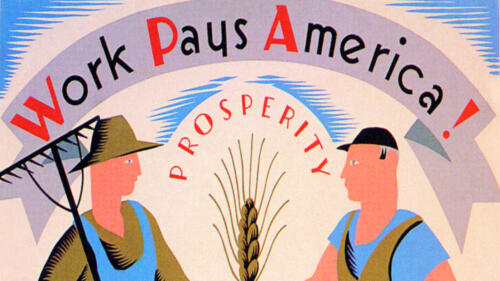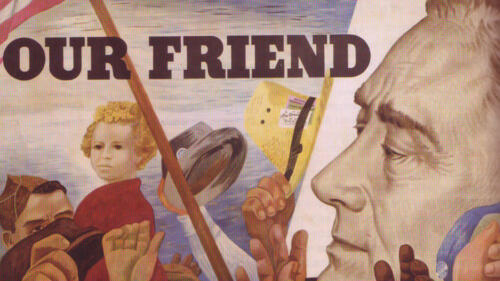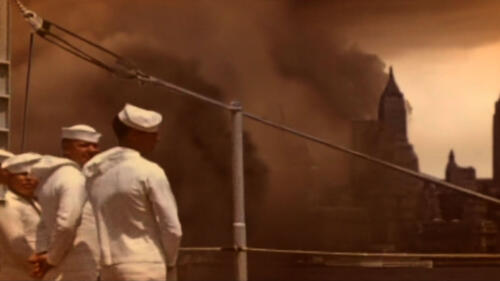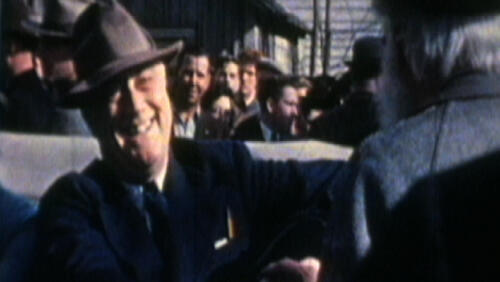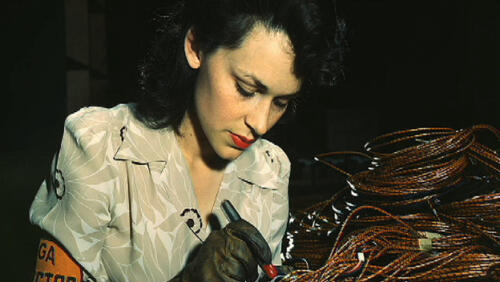Great Depression
The Great Depression was the worst economic downturn in the history of the industrialized world, lasting from 1929 to 1939. Explore every angle of the crisis and how it affected everyday Americans, from the stock market crash of 1929, to the Dust Bowl, to FDR’s response to the economic calamity—the New Deal.
Featured Overview
Learn more about the 1930s, a particularly tumultuous decade in world history that got its start with a bang - or, more accurately, a crash.

Featured Overview
Learn more about the 1930s, a particularly tumultuous decade in world history that got its start with a bang - or, more accurately, a crash.
Start Here

By 1929, a perfect storm of unlucky factors led to the start of the worst economic downturn in U.S. history.

As they traveled west from the drought-ravaged Midwest, American-born migrants were viewed as disease-ridden intruders who would sponge off the government.

As Americans confronted a banking crisis, the Great Depression and then World War II, FDR talked to Americans through radio broadcasts.

The Hoover Dam, LaGuardia Airport and the Bay Bridge were all part of FDR's New Deal investment.
3 Pillars of FDR’s New Deal
How Artists Helped End the Great Depression
History Shorts: How Artists Helped End the Great Depression
By giving support to an army of creative workers, the government was able to lift the prospects of an entire nation.
1:04 watch
Explore All Related Topics
For decades, experts believed they knew what caused the Hindenburg disaster. But there may be more to this story.

The phenomenon started as a practical way to get places, then it became cool.

Uncertainty still surrounds every aspect of the 1932 image.

An economic relief program aimed specifically at helping Native American communities during the Great Depression, the legislation marked a sharp U-turn in federal policy toward Indigenous peoples.

Social Security differed from other New Deal programs in that it wasn’t a short-term solution to the Great Depression. It was a long-term investment.

By 1929, a perfect storm of unlucky factors led to the start of the worst economic downturn in U.S. history.

Theories ranged from negligence to sabotage to an 'act of God.'

The TVA was a model for rural electrification in the South, but it displaced thousands and attracted a slew of lawsuits.

Were financial institutions victims—or culprits?
By giving support to an army of creative workers, the government was able to lift the prospects of an entire nation.
Dorothea Lange captured the reality of the Great Depression in the faces of those who struggled most.

Even amid America’s worst economic downturn, a select few accumulated vast fortunes.

The Hoover Dam, LaGuardia Airport and the Bay Bridge were all part of FDR's New Deal investment.

On the heels of the Great Depression, the federal government under FDR hired young people to work on projects across the country. Here’s what the Corps got done.

Florence Owens Thompson was a Cherokee woman who was a young mother and cotton picker when Dorothea Lange captured her image in the Depression-era photo.

As Americans confronted a banking crisis, the Great Depression and then World War II, FDR talked to Americans through radio broadcasts.

During the 20th century, Americans’ lifespans tended to rise and fall depending on the economy—but not in the way you might think.

By the time Thanksgiving became an official U.S. holiday in 1863, wild turkeys had nearly disappeared. But Depression-era shifts in land use helped the animals rebound.

Desperate times call for creative measures.

Up to 1.8 million people of Mexican descent—most of them American-born—were rounded up in informal raids and deported.

In 1934, the heiress' mother fought her aunt for custody in a very public trial.

Over her lifetime, the first Social Security recipient received nearly 1,000 times what she paid into the system.

More women entered the workforce during the economically tough era, but the jobs they took were relegated to "women's work" and poorly paid.

With millions of Americans unable to find employment, working wives became scapegoats.

Herbert Hoover was not a “do-nothing” president during the Great Depression. In fact, his actions may have made things worse.

The truth behind those stories of Wall Street stockbrokers leaping to their deaths.

As they traveled west from the drought-ravaged Midwest, American-born migrants were viewed as disease-ridden intruders who would sponge off the government.

When times got tough during the Great Depression, people turned to diversions like Monopoly and Scrabble—cheap, reusable fun for a wide age range.

While the New Deal did have a lasting impact on the U.S. economy, other significant factors contributed toward ending the Great Depression by June 1938.

From the moment the leaders of the victorious Allied nations arrived in France for the peace conference in early 1919, the post-war reality began to diverge sharply from Wilson’s idealistic vision.

A historic surplus and a bright idea led to relief for thousands of unemployed men during the height of the Depression.

During the Great Depression, St. Louis residents who were down on their luck built their own city on the banks of the Mississippi River.

As Americans suffered through the Great Depression, the Roosevelts dined on bread and butter sandwiches and cold jellied soup.

A number of complex factors helped to create the conditions necessary for the Great Depression—adherence to the gold standard was just one of those factors.

To justify the need for New Deal projects, the government employed photographers to document the suffering of those affected, producing some of the most iconic photographs of the Great Depression.
The 1939 World's Fair in New York City tried to predict what life would be like beyond the 20th century. "Elektro" is a perfect example.
Explore how the Great Depression of the 1930s forced America to consider having a social safety net, leading President FDR to sign the Social Security Act into law via his New Deal programs. Learn how Social Security has changed over time.

90 percent of rural homes in the U.S. didn’t have electricity in 1935. Ten years later, almost all of them did.

FDIC Created The Glass-Steagall Act set up a firewall between commercial banks, which accept deposits and issue loans and investment banks which negotiate the sale of bonds and stocks. The Banking Act of 1933 also created the Federal Deposit Insurance C...

The Great Depression saw a rise in criminal activity and the glorification of the characters involved, from daring bank robbers to the G-men hunting them down.

In 1930, raising tariffs across the board hurt the U.S. economy.

The Scottsboro Boys, nine Black teenagers accused of raping two white women on a train near Scottsboro, Alabama, in 1931, endured several lengthy court trials.

In a time before social services, society’s most vulnerable people were hidden away in brutal institutions.

Early Social Assistance in America Economic security has always been a major issue in an unstable, unequal world with an aging population. Societies throughout history have tackled the issue in various ways, but the disadvantaged relied mostly on charit...

And why they’re probably not going anywhere.

New Deal Photographers The field of photography benefitted hugely from the New Deal. In the mid-1930s, the Farm Security Administration’s Resettlement Administration hired photographers to document the work done by the agency, which launched the careers...

The FDIC, or Federal Deposit Insurance Corporation, was created in 1933 to protect bank depositors and ensure financial trust during the Great Depression.

The TVA, or Tennessee Valley Authority, was established in 1933 as one of President Franklin D. Roosevelt’s Depression-era New Deal programs, providing jobs and electricity to the rural Tennessee River Valley. The TVA was envisioned as a federally-owned electric utility and regional economic development agency.

The Works Progress Administration or WPA was a New Deal employment and infrastructure program created by President Franklin D. Roosevelt during the Great Depression.

In order to track the disease’s full progression, researchers provided no effective care as the study's African American participants experienced severe health problems including blindness, mental impairment—or death.
Learn more about the 1930s, a particularly tumultuous decade in world history that got its start with a bang - or, more accurately, a crash.

“The Oxford Dictionary of American Political Slang” defines a “boondoggle” as “an extravagant and useless project,” but behind the funny-sounding name is actual history. During the late 1920s and early 1930s, Boy Scouts at summer camps spent their days not only swimming and playing games but participating in the latest scouting craze in which boys […]

The Dust Bowl’s worst storm blotted out the sun and terrified the Great Plains’ already struggling population.

Explore 10 surprising facts about America's epic drought disaster—the Dust Bowl.
Did you know that the Hoover Dam supplies electricity to more than 20 million people? Get all the facts on this marvel of engineering.
Black Thursday brings the roaring twenties to a screaming halt, ushering in a world-wide an economic depression.
See how Henry Kaiser's love for a young lady spurred him to build the Hoover Dam and the great military war ships.
President Franklin Roosevelt creates a series of programs designed to help America cope with, and recover from the Great Depression.
In the early 1930s, the Tennessee River Valley used to flood every spring. FDR created the Tennessee Valley Authority to fix the problem.
How did President Franklin Roosevelt's New Deal get the American economy back on track?
In the 1930s, families were driven out of the once fertile great plains by massive dust clouds.
Elected in 1933, Franklin D. Roosevelt was a reassuring presence for many Americans through the trials of the Great Depression.
Discover how one of the darkest economic times in American history helped the nation reinvent itself.

Explore nine surprising facts about the massive German airship and its fiery demise.

The 1930s were the decade of the Great Depression, the Dust Bowl and other problems, but also the Franklin D. Roosevelt presidency and Hollywood’s Golden Age.

CCC and the New Deal President Franklin D. Roosevelt established the Civilian Conservation Corps, or CCC, with an executive order on April 5, 1933. The CCC was part of his New Deal legislation, combating high unemployment during the Great Depression by ...

The Stock Market Crash of 1929 ushered in the Great Depression, as some 16 million shares were traded on Black Tuesday, Oct. 29, 1929, wiping out many investors.

The stock market crash of October 1929 left the American public susceptible to rumors of impending financial disaster. A phenomenon that compounded the nation’s economic woes during the Great Depression was a wave of banking panics or “bank runs,” during which large numbers of anxious people withdrew their deposits in cash, forcing banks to liquidate loans and often leading to bank failure.

The Fireside Chats refer to some 30 speeches President Franklin D. Roosevelt addressed to the American people via radio from March 1933 to June 1944. Roosevelt spoke on a variety of topics from banking to unemployment to fighting fascism in Europe. Millions of people found comfort and renewed confidence in these speeches.

The Hoover Dam was devised as a means for controlling the wild waters of the Colorado River and became the world's largest dam upon its completion in 1935.

Hoovervilles, named after unpopular President Herbert Hoover, were encampments of crude dwellings for poor and homeless people during the Great Depression.

In 1936, the future looked bright for rigid airships, the hydrogen-filled, lighter-than-air zeppelins. The Hindenburg, Nazi Germany’s pride and joy, spent one glorious season ferrying passengers across the Atlantic. The following year, the airship era screeched to a spectacular halt when the Hindenburg burst into flames while landing in Lakehurst, New Jersey.

The New Deal was a series of programs and projects instituted during the Great Depression by President Franklin D. Roosevelt that aimed to restore prosperity to Americans. A Second New Deal was put in place shortly thereafter as a way to continue the country's economic recovery.

The Great Depression was the worst economic downturn in the history of the industrialized world, lasting from the stock market crash of 1929 to 1939.

The Dust Bowl refers to the drought-stricken southern plains of the United States, which suffered severe dust storms during the Great Depression of the 1930s.
